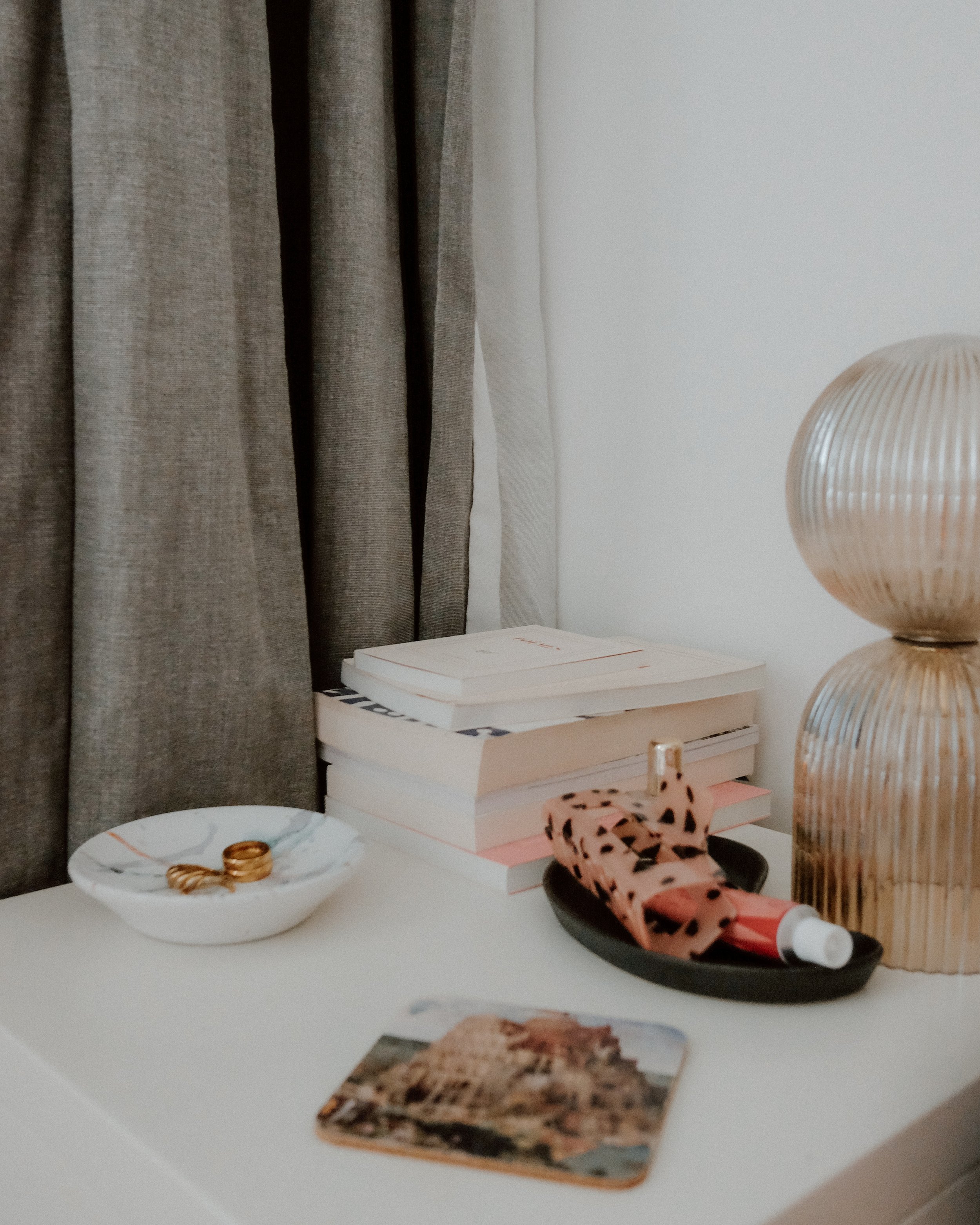A Still Life by Your Bed
There’s a quiet museum in every bedroom. Not a grand gallery, not the white cube of contemporary art, but a small, intimate exhibition that changes slightly each day. It’s your nightstand - the humble keeper of keys, books, lip balm, crumpled receipts, a glass of water gone warm. A still life, not staged by an artist, but composed unconsciously in the rhythms of everyday living.
Lately, I’ve found myself drawn to these quiet collections. The way objects gather like dust…slowly, deliberately, without our noticing, and yet come to represent so much. Like a still life painting, they are loaded with more than their immediate function. They are symbols, carriers of meaning, tiny monuments to who we are, or who we were, on a particular day.
Take my own nightstand. What stories does it tell?
There’s a small dish with mismatched jewellery - gold rings, a single pearl earring, one I thought I lost last summer and found again under the edge of my bed. A small bottle of lavender oil, mostly used but still fragrant, that I bought in a French pharmacy in Le Marais. A stack of books: one I’ve read, one I pretend I’m reading, one I keep close like a comfort object. A ticket from a gallery visit poking out of one of them. A claw clip and my favourite hand cream, also from Paris.
None of these things are precious in the strictest sense. But they carry memories. They conjure moments and places, things I love, phases I’ve outgrown. My nightstand is a portrait of the self, curated not through intention but through habit and sentiment.
This is, in essence, the poetry of still life.
In art history, still life painting has long been a meditation on objects and what they mean beyond their surface. The Dutch masters in the 17th century painted elaborate arrangements of fruit, glassware, and flowers, not just to display technical skill but to hint at the ephemeral nature of life. A peeled lemon, a dying bloom, a timepiece; each was a symbol of mortality, beauty, and the fleeting nature of pleasure. Even the most mundane items were imbued with meaning.
And isn’t that what we do, unconsciously, with our own objects? Our belongings become our private vanitas. They remind us of who we are when no one else is looking. They speak to desire, to comfort, to the practical and the poetic.
In a world obsessed with minimalism and decluttering, it’s easy to see objects as clutter, as distractions. But I think we lose something when we strip our lives of these intimate signifiers. We lose the physical, tangible, texture of memory. The things we keep close are bridges between the past and present, between who we were and who we’re becoming.
That’s the power of objects: they tell stories we might not know how to put into words.
So, I’ve started to pay more attention to the still life on my nightstand. I take note when I replace a finished book with one that’s been calling to me. Sometimes I’ll pause before bed and just look. Not to tidy or rearrange, but to witness. To see the poetry in the mundane. The quiet presence of a half-drunk cup of tea. The things shoved into the drawer, only to be forgotten about.
It’s art, in its own way. Not exhibited or critiqued, but felt.
So tonight, take a moment to look at your own nightstand. What’s there? What’s been gathering quietly, without fanfare? What stories do those objects tell about where you’ve been, what you love, what you value?
You don’t have to change anything. Just look.
There, is your own private still life. A gallery of memory. A meditation on who you are, object by object, night by night.
And that, perhaps, is the most honest kind of art.
